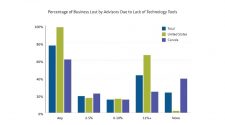The classic image of a school librarian shown in movies and TV is that of the character who loves books, lives by the Dewey Decimal system and constantly has a finger pressed to their lips shushing noisy students.
That’s not the reality of a school librarian anymore. Now, libraries serve as spaces for crafting, socializing and decompressing as much as a place of study. School librarians are tasked with teaching students to use technology, identify solid research and be a good digital citizen along with a love of reading.
As the impact of the digital age grows, the roles licensed teacher-librarians must fill are evolving and expanding. Teacher-librarians are major support systems for teachers, traveling to classrooms and teaching skills such as proper techniques to find, verify and cite information, and introducing students at an early age to ways to safely navigate going online.
But in Oregon the number of licensed librarians in schools has dropped nearly 80% as the number of students per librarian has increased by 542%.
In 1980, Oregon had 818 licensed librarians — meaning they have a teaching license — in its schools, according to the state’s Library Services and Technology Act five-year plan through 2022. Then, there were 547 students to each librarian.
The state Library Services and Technology Act’s five-year plan reported there were 164 licensed librarians in schools in 2015, driving the student count up to 3,515 per librarian.
While you may see a paraprofessional or a parent volunteer in school libraries, the absence of a licensed librarian can mean a lack of experience teaching literacy and proper research to students, the state plan said.
There is no regular pattern for staffing school libraries across the state, according to the latest survey by Oregon Association of School Libraries, and very few schools met the state’s recommended staff numbers to be a truly “strong library program” as outlined in Oregon’s Administrative Rules.
There’s much at stake with the lack of teacher-librarian staffing, the state plan reported. In addition to most Oregon K-12 students not benefiting from direct instruction in information literacy from a librarian, the state’s plan noted how schools are facing low preparedness and graduation rates — 26% of high school seniors did not graduate in 2016, according to Children First For Oregon.
“Research shows that the two most significant indicators of high school graduation are kindergarten readiness and reading at grade level by the end of third grade,” the state plan reported.
With $2 billion in new school funds on the table from the Student Success Act, area school districts are faced with the difficult decision on what to invest in — adding school librarians is just one of the many investments districts across the state could choose.
What is the difference?
In order to teach students, librarians are required by Oregon law to have a teaching license with an endorsement in library media — the state’s minimum requirement.
Amy Page, a licensed teacher-librarian at Walterville Elementary School in Springfield, started as a classroom teacher in 1997 and later chose to move to part-time work and received an endorsement in library media. She has yet to meet another certified elementary school librarian in the Springfield area.
But Debbie Levy, who is one of just three certified librarians in Eugene School District, worked backward. She started as a public librarian with a master’s degree in library information studies. When she saw schools as her next step, she went back to school and earned her teaching license.
“You can’t be a school librarian, even with a master’s in libraries without a teaching license,” she said, “I essentially got two master’s degrees to be a school librarian.”
Having volunteers and educational assistants to help in the library is great, Levy said, because it means the library is still open to students, which isn’t the case if no one is there to monitor it.
But many of the library’s educational aspects can’t be done without a licensed librarian.
There’s knowledge that comes with being a licensed teacher-librarian in how to recognize student needs, connect them with books and materials they like and what works best for them.
This could mean recognizing a student who would better learn from an audiobook instead, being a “book matchmaker” or cultivating a diverse and well-rounded collection of reading materials based on that knowledge.
“(The assistant) is wonderful, but there are a lot of things she doesn’t do with students,” Levy said. “Almost every week there are students who come in to ask how to cite things, and she just has to say, ‘Wait to ask Debbie.’ ”
Keeping kids safe and smart online
A major component of a librarian’s job is about building students’ literacy, whether that be through books or a website. With more resources moving online, digital literacy has become crucial to student success and a focus that has evolved for librarians.
“When I’m talking to people about my job, they usually just say, ‘Oh, I love books,’ and I’m like, ‘Yes! But that’s just a little bit of what we do now,’” said Page. “We’re (education technology) leaders and collaborators.”
Page said when teaching students to research, she encourages books as resources, but also teaches them how to read a URL, commonly known as a web address, and identify information that is actually real.
“From third, fourth and fifth grade, I’m teaching them ‘You know, we don’t just Google — what sort of skills do we use when we’re searching?’” she said.
For the early years of elementary school, she uses goofy examples like a website that claims platypuses can fly and teaches students to look beyond edited photos or videos and find whether it’s a reputable source.
Librarians also teach students about digital citizenship: the power they have online and ways to stay safe.
It’s never too early to talk about this, Page said, because kids start using social media early and need to know what to keep private (like their address) and that they still need permission from an adult.
“We still teach them not to talk to strangers, unless they have an adult with them,” Page said. “Same thing when they’re in their digital world — if your parents or an adult is with you and they say it’s OK to communicate with somebody in this chat room about this game that you’re on, then you can do it.”
Teaching that those real-world concepts still apply online is what helps keep kids safe, she said. This also applies to lessons about cyberbullying and how to be conscious of how you act online, which is a prevalent issue at the middle and high school levels.
These days, students easily leave a digital footprint. Page tries to explain to older students how to think twice about what they say or do online because it could follow them later in life, which is something many students didn’t have to worry about in the past.
Providing teacher support, reliable space
On Friday, Levy gave tours of the library to Churchill High School students and talked about all the library offers.
A major component is the technology use, though it’s not limited to within the library walls. Levy often goes into classrooms to teach research lessons and how to use new technology — as do many certified librarians. “I support every department in the building in some way,” she said.
On her list is an International Baccalaureate pre-calculus class, which she will talk to about finding data sets and how to use them, and a physics class, which will learn about properly citing information and building a bibliography for their work.
“I work with the teachers and we collaborate together,” Levy said. “So I take that off their hands — while they know the data, they may not know the best place to find the data. They may know it’s important to use citations, but they may not know the mechanics of citations.”
Librarians also train on new technology and find new ways for its use in classrooms that are engaging and not just a quick replacement for a worksheet.
The library also is a soft place to land for many students — whether it be to come in after or before school to do homework or use resources they don’t have at home.
In the mornings before school, Levy said there are typically 20 to 30 Churchill students getting ready for the day: printing papers out, using the craft area or just socializing with friends. Levy said the library is a resource for students’ simple questions every day, like how to adjust the margins on a paper or the font size — skills students may be expected to know, but don’t until they’re taught.
Levy and Page also noted not all students have the same resources outside of school. Without access to a library, students who live in a home without WiFi, a printer or learning materials could fall behind.
This is backed by the state’s five-year plan report: “The achievement gap is primarily caused by the different levels of support children receive when they are not in school,” it said. Having reliable access to a library and someone available who can answer questions and provide programming to keep students on track can help close that gap, it concluded.
It’s also a spot for students to decompress and often where they’re sent when having a behavioral or emotional issue and need to calm down.
“I’m not a counselor,” Levy said, so it’s not hands on management of those kids, but it’s nevertheless one of many responsibilities for librarians now.
“The power of the position can really encompass a lot,” said Page. “That’s the job.”
Follow Jordyn Brown on Twitter @thejordynbrown or email at [email protected].















